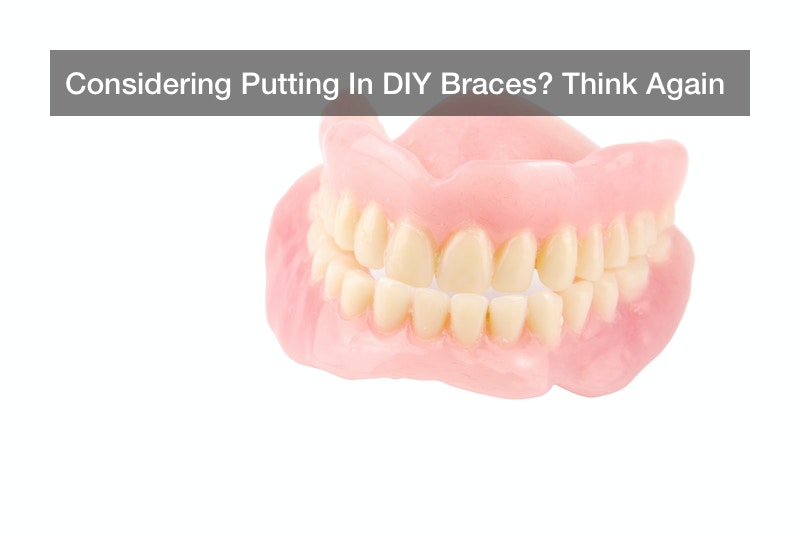
While a significant number of people all over the world have straight white teeth and beautiful smiles, others aren’t as lucky. Some people have to contend with misaligned, crooked, crowded and overlapping teeth.
Although such teeth don’t look so good, their appearance should be the least of your worries. Misaligned teeth are difficult to clean, thus may predispose you to cavities and gum disease. It is therefore understandable why so many people would try using DIY braces to straighten their teeth.
Such braces are typically crude and made from obscure household and office supplies such as rubber bands and paper clips. They are fastened to the teeth to push them closer together and help align them. These braces are commonly used by teens and young adults looking to avoid the cost of visiting an orthodontic specialist.
However, many orthodontists have come out to speak against this trend. If you’ve been flirting with using DIY braces yourself, here are a few reasons why you should think twice.
1. No Supervision from a Trained Specialist
One of the more serious drawbacks of using DIY braces is that the process lacks the professional oversight of an orthodontist. Although you may find videos and articles online, they hardly ever have as much information as trained orthodontists would.
Orthodontists are highly trained and experienced, thus have what it takes to prescribe braces on a case by case basis, judging by the degree of the problem. Visiting a specialist also ensures that your braces are professionally and safely installed, preventing your teeth from any further damage.
2. There is Great Potential for Your Teeth to Relapse
Straightening teeth is a process that takes a long time to accomplish. In fact, braces prescribed by orthodontic specialists take as long as two years to get the job done. Many people turn to DIY braces because they’d like to straighten their teeth in a much shorter time.
Braces work by slowly shifting the teeth, giving them time to sit comfortably in their new positions. DIY braces work differently; they force your teeth to get into position faster. Because of this, they are likely to move back into their original position soon after the bands come off.
3. They May Lead to Bigger Tooth Problems
Manipulating your teeth into moving into straighter positions over a short period of time may sound like a win, but it really isn’t. Using DIY braces may cause more damage to your teeth and gums since they move the teeth too quickly. This will ultimately make it necessary for you to schedule a visit to a specialist.
This drastic shift in your teeth may also affect your bite, how your teeth are positioned, and other important aspects of your oral anatomy. You may start experiencing new problems altogether, such as shooting pains, problematic jaws, and muscle spasms. Without professional supervision, you might leave these braces on for too long, causing more harm than good.
4. They May Cause Infections
DIY braces are generally assembled from non-sterilized, non-medical-grade supplies. Such items can cut into your gums, bringing about open wounds that may not heal up as fast as they should, especially if the makeshift braces are still in place.
If these wounds become infected, they can cause damage to surrounding tissues and may even lead to severe bone loss. Such problems are very difficult to correct and may warrant corrective surgery.
What Other Options Do You Have?
Deciding to straighten your teeth is the best decision you could make for your oral hygiene. However, it’s important that you do it right.
Traditional metal braces have been used by orthodontists to correct misaligned teeth for the longest time now, thus are proven to work. Invisalign braces are also becoming more and more popular. Because of their smooth plastic finish, they aren’t associated with cuts and scrapes, unlike metal and DIY braces. They also take between six and eighteen months to make sufficient impact, depending on the state of your teeth.
With so many affordable options at your disposal, you don’t have to expose yourself to injuries and complications using DIY braces.
